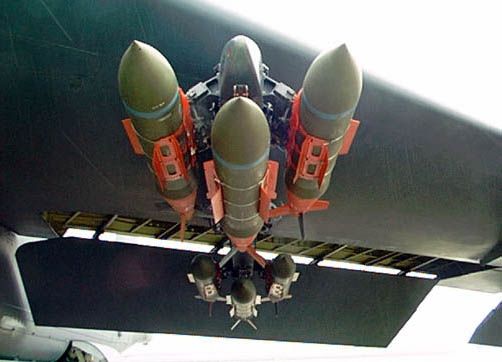Irreparable high radar observability in a stealth fighter is an unsoundness of design, there are no conditions in which this is a positive trait.
There is no accepted standard on low radar observability.
The unofficial par is the F-117, of which its RCS value is still secret, so even if China release the J-20's data, there is still nothing to measure that data against.
1) The canard argument is very poor.
No, it is not. If you take any structure and measure its RCS as a
STANDALONE structure, all you will have is an RCS value without context.
It appears to me you are unfamiliar with the basics of radar detection and low radar observability. This post will be longer than usual, but if you want to learn, you will make the time to read it. By the way, you will not learn this from any of the Chinese members in this forum, or even from other Chinese forums, for that matter.
In radar detection, everything is a radiator the moment the body is inside a radar beam.
There are three rules in designing a radar low observable body:
- Control of quantity of radiators
- Control of array of radiators
- Control of modes of radiation
The rules are more like guidelines. There is no violation of the rules, only the degree of obedience to them.
In radar detection, the sphere is considered the ideal body because it is the most obedient to the above three rules.
The sphere has only one radiator -- itself. That means it is the most obedient to the rule 2: Control of
ARRAY of radiators.
To show that I am not making this up...
http://www.centurymetalspinning.com/radar-calibration-spheres/
https://en.wikipedia.org/wiki/Lincoln_Calibration_Sphere_1
It has been used for radar calibration since its launch.
The sphere is used for radar system calibration because no matter its orientation to the seeking radar, its RCS will always be the same.
So the issue is not the canards but rather that the J-20 has eight major flight control structures while the F-22 and F-35 has six.
For the F-15 and F-22, each has six major flight control structures. But why is the F-22 'stealthy' while the F-15 is not ?
Because of rule 2 : Control of
ARRAY of radiators.
The word 'array' means 'in relation to'.
In designing a radar low observable body, the corner reflector
SHOULD be avoided. If not possible, then the 90 deg corner reflector
MUST avoided.
Like this...
In fact, the corner reflector is so good at increasing RCS that the structure is used in marine safety where small boats can appear on radars.
https://www.westmarine.com/WestAdvisor/Selecting-a-Radar-Reflector
It is not about the canards' dihedral or its movements in flight. It is the
TOTALITY of structures that are in the radar beam.
The reason why weapons are internalized in 'stealth' fighters is because -- as the example above -- weapons are the least obedient to the three rules.
Let us look at the YF-23...
The YF-23 is considered to be less radar observable or 'stealthier' than the F-22 even in the absence of hard measurement data. Why is that ?
Probably because the YF-23 has four major flight control structures. That makes the YF-23 more obedient to rule 1: Control of
QUANTITY of radiators.
Now we come to rule three: Control of
MODES of radiation.
There is a reason why we moved away from the angled faceting techniques of the F-117: Modes of radiation.
Curvatures produces different ways on how a radar signal leave a structure. A flat surface produces large specular reflection.
Like this...
Curvatures produces surface waves actions that have lower but often longer duration of radiation. In school, infinite surfaces are used in hypothetical situations, but in real life, all structures are finite so a radar signal has to leave a structure somehow and some time. So we have rule three: Control of
MODES of radiation.
The J-20 with its
EIGHT major flight control structures are less obedient to the three rules.
You have been misled, my friend. It is not about the canards.
Having said that, even if the J-20 is poorer than the F-22 or F-35 in stealth, no one -- to the best of my knowledge -- has publicly quantified how much poorer. If a radar can pick up an F-22 at 100 kilometers, while the same radar in the same conditions picks up a J-20 at 105 kilometers, is that really going to make much of a difference?
A five klicks difference is meaningless. But it is misleading to use such close figures.
No one is going to release hard measurement data. I could argue that the difference
MIGHT be 20+ klicks. In that case, the J-20 will be at a disadvantage.











 you live in you wet dream and wishful thinking sir
you live in you wet dream and wishful thinking sir




 I dunno why Deino does not post his "disappearing" reply here at pakdef for clarity purpose.
I dunno why Deino does not post his "disappearing" reply here at pakdef for clarity purpose.